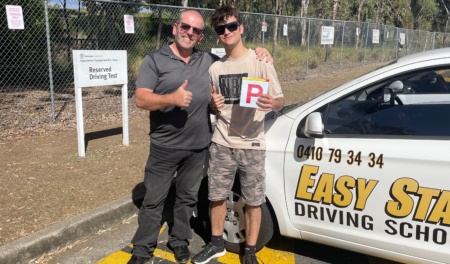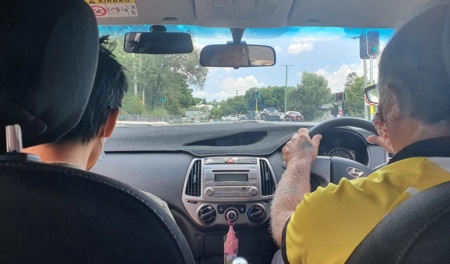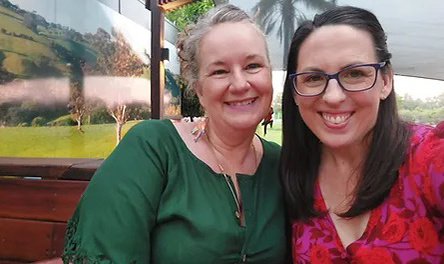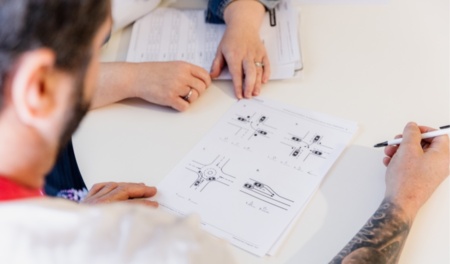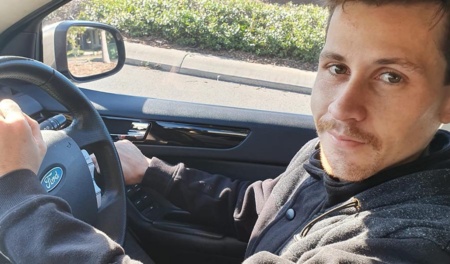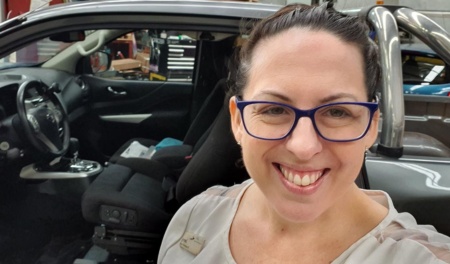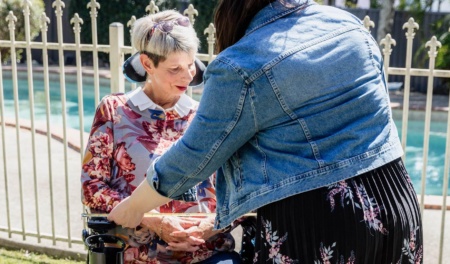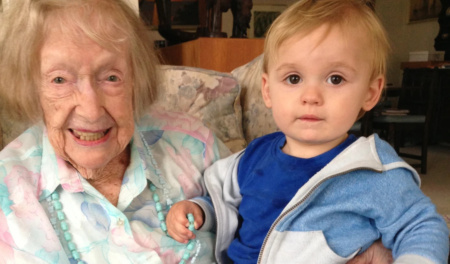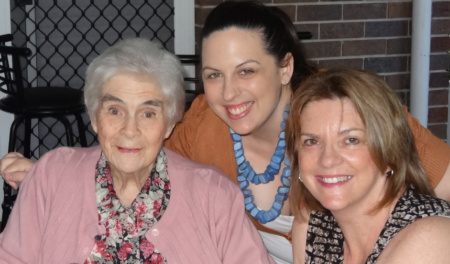Learner Driver Assessment
We receive many referrals for young people who may be on the Autism Spectrum, or have other diagnoses such as anxiety, ADHD, mild intellectual impairment, and developmental delay.
We have worked with Dr Miriam Monahan (OT Driver Assessor from USA) from the Driver Rehabilitation Institute to develop an assessment process that works for this client group – this assessment process is called “Potential to Drive”.
The Potential to Drive assessment usually includes:
- Clinical assessments (which may include physical function, vision function, cognitive function / intelligence)
- On-road activities (which may include PASSENGER activities – perfect if your young person doesn’t have a Learner’s permit yet, and may include a short behind-the-wheel drive)
- Review of progress with lifeskills (cooking, washing, shopping, community activities – this is so important in looking at readiness for driving.
For more information about the Potential to Drive assessment – click here.
Want more background information? Have a read of our article: Potential to Drive – a better approach to assessing young adults readiness for driving.
OT Driving Assessment Process
Intake / Referral
Your learner or pre-learner driver has a medical condition / injury / disability (psychosocial disabilities eg autism spectrum disorder or a physical disability) and has a goal to learn to drive. The OT driving assessment looks at the young person’s strengths and challenges and determines if the client has potential to learn to drive, and whether they require a specialised driving training program. Most clients will be funded through NDIS and have an NDIS plan.
Paperwork Required
Please ensure you have uploaded copies of the following documents to your Client Portal and have them available on the day:
- GP Referral / Medical History
- Medical conditions and medications
- Readiness to Drive – Lifeskills Checklist
- GP Referral / Medical History
- This is helpful and prevents us from having to ask your learner driver repetitive questions, which may be uncomfortable for them to answer.
- GP Referral / Medical History
The young person does not need to have a Learner’s permit to do the assessment, but if they already have this, we need:
4. Current Learner’s Licence
- Please check the expiry date on your learner’s permit.
- If your learner’s permit is not current, take your medical certificate to the Transport Department to get a temporary licence – this will cost about $87 for 12 months.
- You cannot participate in the “behind-the-wheel” part of the driving assessment without a valid learners licence and QLD Transport Medical Certificate.
5) Current QLD Transport Medical Certificate (QTMC):
- This is a requirement from the Assessing Fitness to Drive guidelines and QLD Transport requirement, even if the GP advises that the client does not have a medical condition that would impact on ability to drive.
- Obtain this from your GP, stating “medically stable for purpose of OT driving assessment / driving lessons only”.
- You will need to take this QTMC for processing to QLD Transport prior to your appointment.
6) Optometrist Report if required by Doctor
Assessment
What is involved in an occupational therapy potential to drive assessment?
2 Parts on 2 different days: Clinical Assessment and Practical Assessment.
2 Hours Clinical Assessment:
- medical /disability history and medications
- Learning styles
- Any anxieties, sensory issues or triggers?
- Any driving history
- physical, cognitive and vision function screen
- road law knowledge screen
- Review of lifeskills
- Introducing operational/tactical/strategic skills
- Introducing “critical items” and visual search
AND
2 hour Practical Assessment (in the car and discussion)
Note: Driving Well OT partners with about half a dozen specialised driving instructors who are independent business owners; the driving instructor is selected and booked, based on geographical location, type of service, anticipated match, and availability.
- The practical assessment is a drive in the specialised driving instructor’s car, with the driving instructor in the front passenger seat, and the OT Driver Assessor in the rear left seat, and parent/support worker in the rear right seat. The drive usually commences from your home.
- Passenger activities:
- Lane position awareness
- Visual search
- Gap selection
- Problem solving
- Observation skills
- Speed control
- Planning and judgement
- Vehicle positioning
- Physical control and reaction time
- Insight into driving performance
- The OT Driver Assessor will talk with the Driving Instructor at the end of the drive, to determine the outcome of the assessment.
- The assessment CANNOT be completed in the client’s own vehicle, as it does not have dual controlled brakes and this may not be safe for the client, OT Driver Assessor, Driving Instructor or the community. Every OT driving assessment will be completed in the driving instructor’s car with dual controls, so the driving instructor can intervene if there is an emergency situation.
Possible Outcomes
For every OT driving assessment, there are two possible outcomes:
Has Potential To Drive:
- Client is demonstrating appropriate foundation skills across most areas of clinical, passenger activity and lifeskills assessment, and can be recommended for a specialised driving training program from their NDIS plan.
Does not have Potential to Drive:
- Client’s skills across clinical / passenger activities / lifeskills assessment are not sufficient – client is not ready for driving; OT Driver Assessor cannot recommend NDIS funding for specialised driving training program at this time. Client may attempt to improve skills and try again in the future; it is important to be aware that some clients will never be able to drive because of their disability
After the Assessment
1. OT Driving Assessment Report
Your OT Driver Assessor will complete a medicolegal report regarding the outcome of the assessment and recommendations – this will be sent to your family, referring doctor (usually your GP), Medical Conditions Reporting Unit at QLD Transport, the driving instructor and any other relevant parties determined during the assessment (eg Support Coordinator, NDIS, driving instructor).
We aim to complete the potential to drive report within 10 BUSINESS DAYS and we usually send the report to the GP/Doctor through the “Medical Objects” system or via email.
2. See Your GP
- Your OT driver assessor will advise if there are any changes needed to the QLD Transport Medical Certificate (eg to add or remove a restriction for driving with driving instructor only).
- If necessary, take your updated QLD Transport Medical Certificate for processing.
3. Next Steps
Driving lessons: Approval for driving training program
- When a driving training program (lessons with the specialised driving instructor) are recommended, the OT driver assessor will submit the OT driving assessment report and quote for the number of recommended lessons from the driving instructor provider, to the NDIA.
- “Specialised driving training” is a quote required item, which needs to be approved by NDIA and added as a line item to your NDIA plan under Capacity Building: improved daily living (Specialised driver training 15_046_0129_1_3)
- This applies even if you have a goal regarding driving / community access, and even if you have sufficient budget in improved daily living.
- Once you have written approval from the NDIA (and the line item is added to your NDIS plan), you are able to book your lessons directly with the driving instructor. (Note – this is taking months to gain approval).
- If you are with another insurer, a quote and report is provided, and the insurer must approve the quote to commence lessons.
- Clients can commence self-funded lessons, however NDIA does not reimburse lessons already paid; NDIA does expect the client to contribute to the cost of the lessons and may require the client to co-fund the lessons or show evidence of funding additional lessons as part of the approval process.
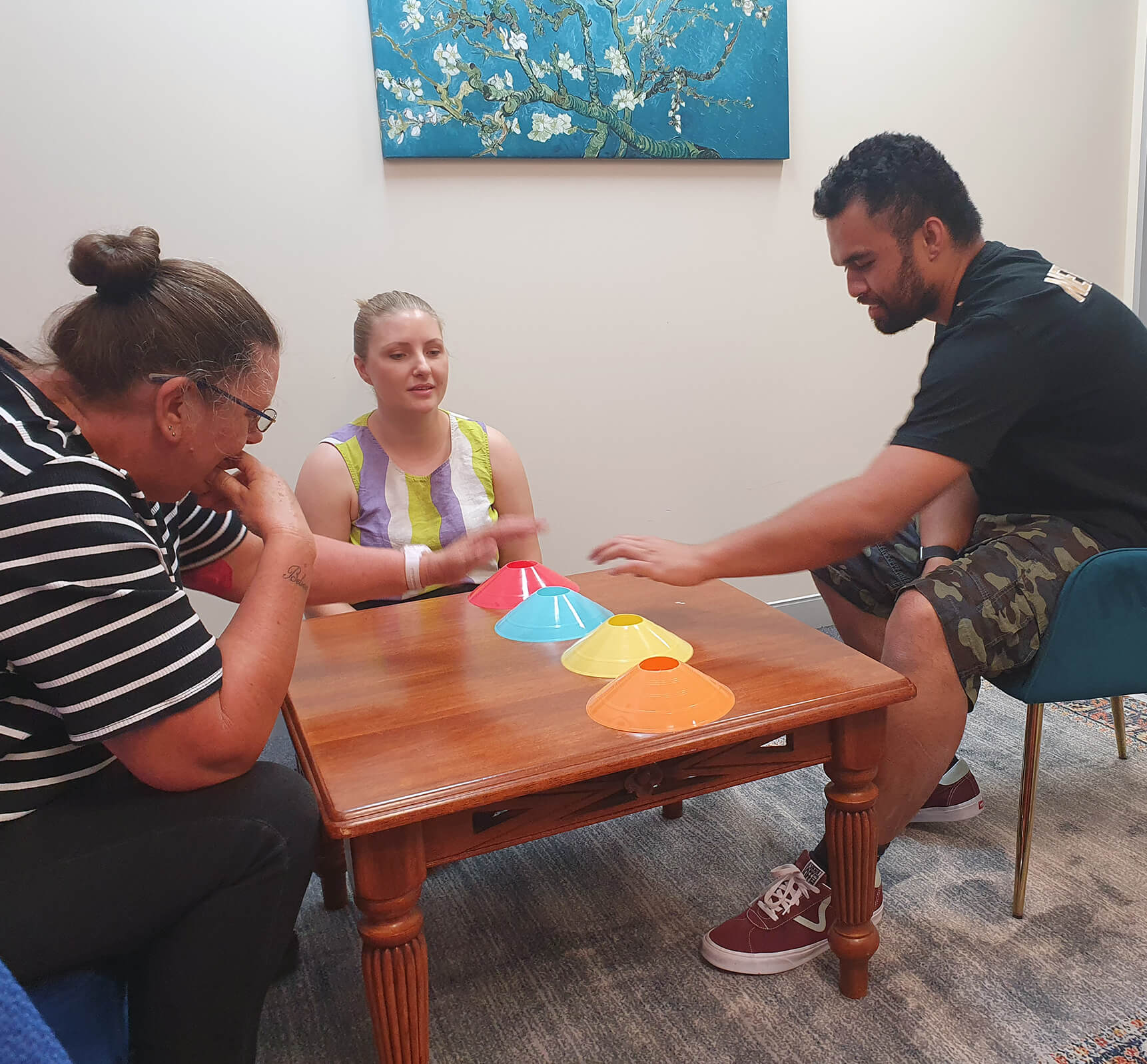
Driving lessons are full-on – there is a lot to take in, especially in the early phases.
We know for conditions including ASD and ADHD that focusing on one task at a time and building this up (eg developing visual searching skills when outside of the car or when in the front passenger seat), should make it easier to integrate skills when behind-the-wheel on driving lessons.
Driving Well has developed a therapy program “Get Driving” – which includes face to face clinic and passenger activities) and this online therapy toolkit for clients to purchase access at home with their parents / support workers, to work on fundamental skills needed for driving – and build these up so they will get more out of their driving lessons with the driving instructor.
Driving Well OT rents a clinic space at Takes Care Specialist Centre, 11 Cleveland St, Stones Corner on Wednesdays, where we love to provide “Get Driving” therapy programs to our learner driver clients at this beautiful and accessible clinic space. This will reduce costs to our clients, and allow us to be so much more efficient in providing services.
Sessions are booked for 1.5 hours on a fortnightly basis with your OT driver assessor on Wednesdays.
- Optional sessions with the driving OT to develop fundamental skills (eg planning and processing skills) to prepare for driving lessons with the specialised driving instructor
- Combination of clinical activities (visual search, processing and motor coordination) and passenger activities with the driving OT driving her car and client as the front passenger
- Get Driving therapy sessions are usually provided at our clinic space at Stones Corner on Wednesdays.
- Disclaimer: OT Driver Assessors are NOT driving instructors; this is not driving training and does not count towards log book hours or replace driving lessons; rather these sessions are aimed at building processing, observation and planning skills, to be better prepared to undergo and participate in driving lessons with the specialised driving instructor.
Targeted to what you need to work on and graded to improve your skills.
In the clinic:
- Motor coordination activities
- Vision, processing and decision activities
- Speed of processing and reactions
- Drive Focus app and community mobility
Passenger activities:
- In the car with the OT driver assessor (OT driving her car, client is front passenger)
- Visual scanning and observation practice
- Planning and processing skills
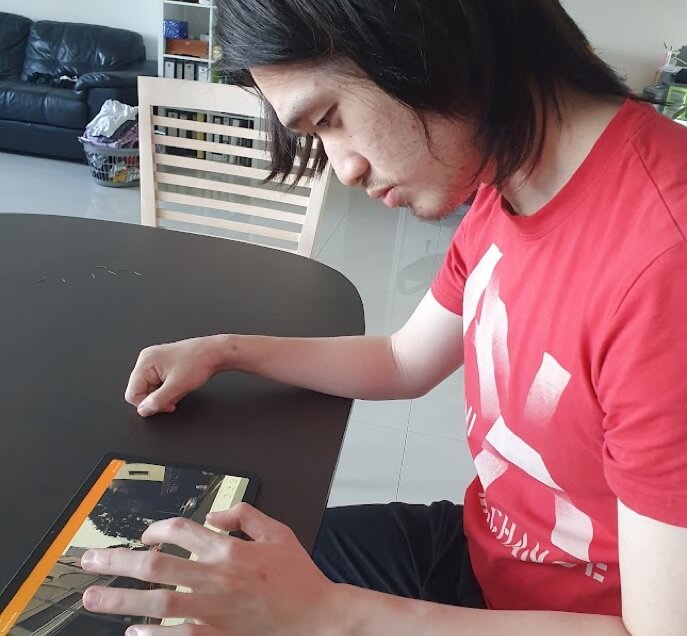
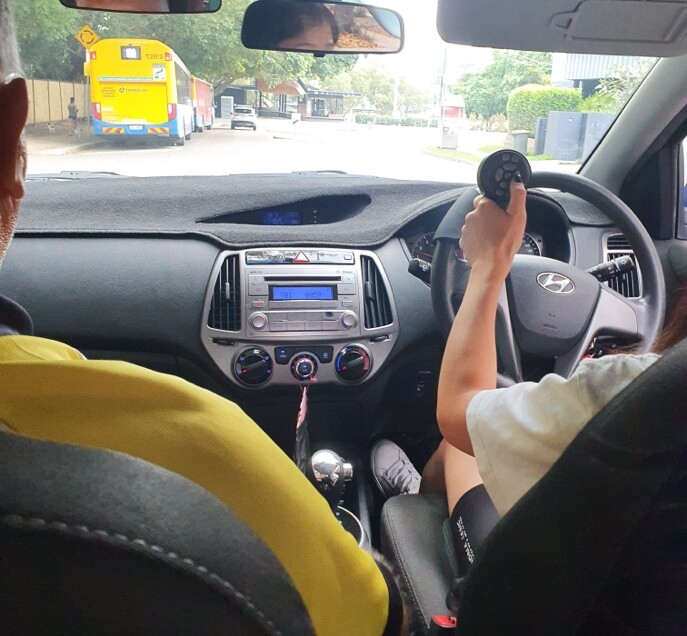
- Suitable if you have a computer and suitable person for the learner to practice with (eg parent / support worker)
- Purchase your own access to this online therapy toolkit
- Toolkit includes information handouts and video examples of clinic based and passenger based activities
- Suggestions for grading of each activity
- Opportunity for your learner to gain more structured practice outside of OT support sessions and driving lessons
“Get Driving” Online Therapy Toolkit
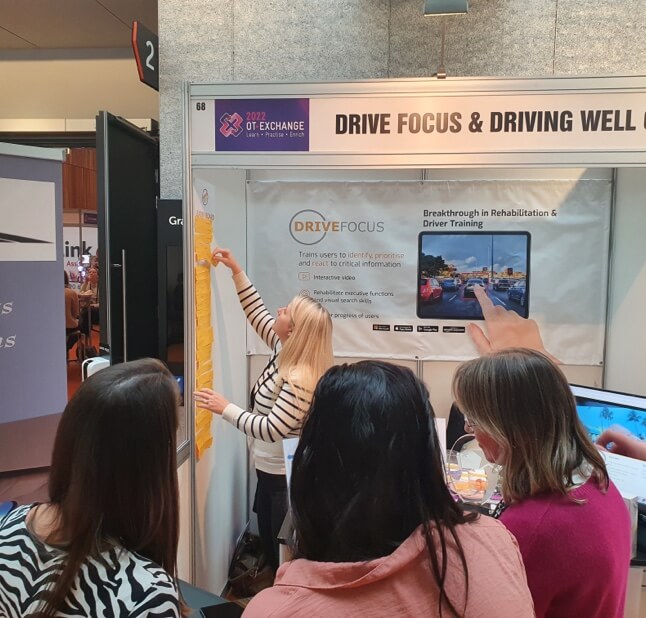
Drive Focus has won awards in Australia!
- Finalist for Best Assistive Technology Product at Australian Disability Services Awards, November 2022
- Winner of Technology Category at Australian Road Safety Awards, June 2021
This is a fantastic app (on apple ipad or android tablet only), that helps to focus your visual searching skills for driving. The app is American but has Brisbane and Melbourne real-life driving videos, where you have to tap on all the “critical items” during the drive.If you need to buy a tablet device, the android version of the app has more functionality (with easier to read “review your score”, email your results to your OT, and also has the Melbourne tour available now).
The app costs about $20AUD and was developed by a driving OT and researcher in America and has had research studies that show it helps to reduce driving errors. It is “brain training for driving”!
Here is a one-minute video about the app: Watch the video
We encourage all of our drivers to purchase and practice using this app – you will really find that it helps to improve your alertness on the road.

